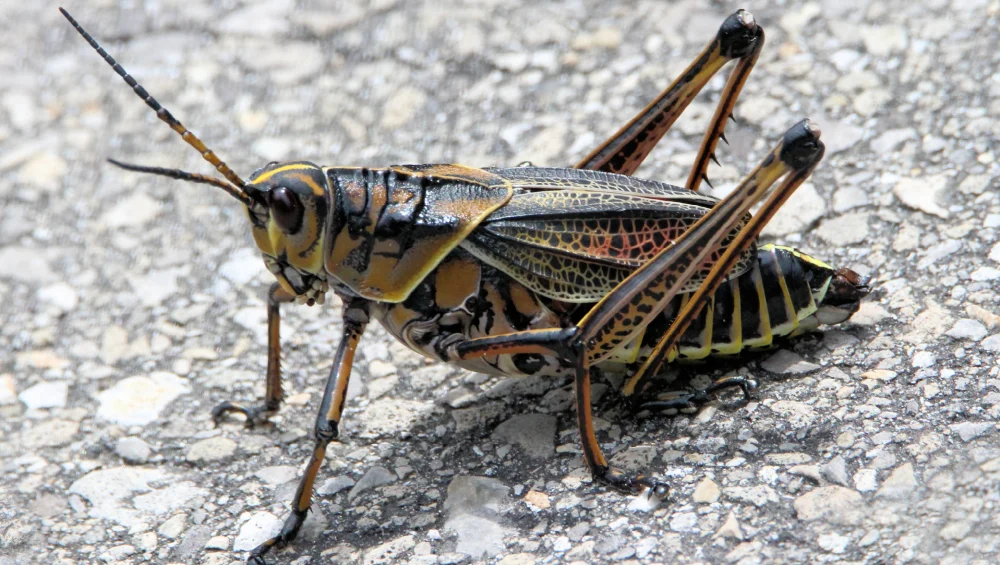Florida may not see a lot of action this summer from the cicada broods emerging across the Eastern U.S., but that doesn’t mean we’ll be left in bug-free peace. It’s grasshopper season and these colossal, eye-catching Florida lubbers oddities are here to eat.
Eastern lubber grasshoppers, commonly referred to as lubbers, are native insects to Florida and the Southeastern Coastal Plain. The name “lubber” comes from the old English word “lobre” which means lazy or clumsy.
If you’ve ever spotted one or 50 in your yard, you know how slowly their winged, but flightless, bodies amble along. However, when it comes to feeding on your gardens and landscaping, they’re anything but lazy. On the contrary, these huge insects are highly motivated to chomp on your plants.
While lubbers do not need to be eradicated, some people choose to remove the grasshoppers in the hopes of sparing their plants from being nibbled on.
It’s all lubber control
So how do you save your lilies (a lubber favorite), vegetable garden, and fruit trees from being grasshopper snacks? Because these insects are mostly harmless to humans–they neither bite nor sting–they can be removed by hand. A simple and effective method is to simply brush them into a bucket of soapy water. You may prefer to wear gloves when doing so.
This method is especially useful when disposing of numerous baby lubbers which can often be found hanging together, chowing down on the same branch or leaf. Either shooshing the nymphs into the soapy water or picking the whole leaf and dropping it into the “bug bath” works.
Related: USF Launches Dashboard to Track Invasive Mosquito Population
Due to their large size and ability to detoxify natural toxins, mature lubbers are often resistant to insecticides. If treatment is applied to plants when the insects are still small, or soon after they hatch, you may be able to put a dent in their population.
Lubber lifecycle
In the summer, lubbers lay their eggs in soil, where they remain underground through fall and winter. In March and April, the eggs begin hatching and the nymphs often appear in clusters. It’s not uncommon to spot 10 or more small, black hoppers at once. If you want fewer lubbers in your yard, this is the ideal time to eliminate the bugs, when they’re vulnerable and too young to reproduce.
After several months of feeding, the grasshoppers hit their peak size around July and August. Adult, female lubbers, which grow larger than males, can reach three inches long. Brightly colored and almost alien-looking, this is when the insects start breeding and may be most problematic.
Removing the bugs before they can lay eggs is key to preventing them from multiplying. By minimizing the population, you may possibly spare your yard from being a lubber smorgasbord.
Bite marks on your plants aside, lubbers are a harmless component to Florida’s ecosystem. If you don’t mind sharing your garden or yard with these striking insects, residents are encouraged to simply let them be.




























